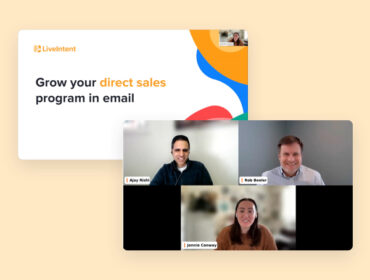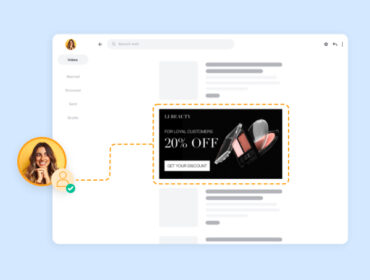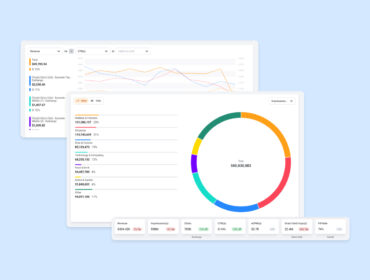Email list monetization: What is it and why is it important?
As publishers seek new ways to drive revenue and personalize audience experiences, one strategy stands above the rest: email list monetization.
Despite those pesky murmurs of newsletter subscription fatigue, email engagement is stronger than ever. Over 4.2 billion people worldwide use email — with that number expected to reach 4.5 billion by 2025. And consumers prefer to hear from retailers via email — even more than via smartphone apps, social platforms, or text messages.
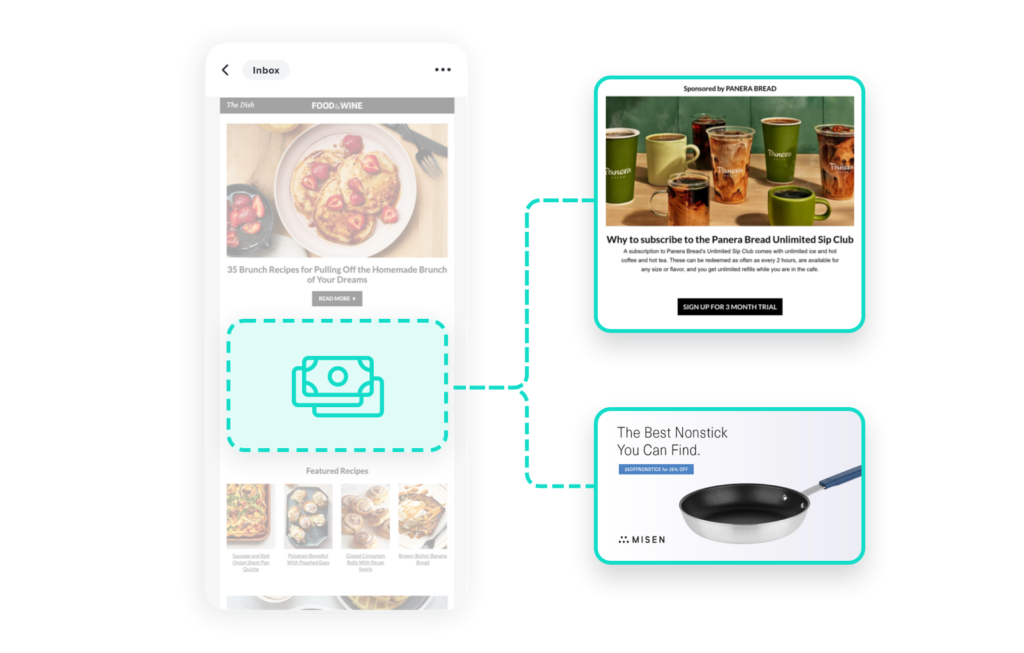
Media and brand publishers are reaping the benefits of this engagement by monetizing their email lists. According to a 2022 report from Digiday, a whopping 92% of email marketers plan to monetize their emails, and roughly half will do so with email ads. Morning Brew, for example, drove 95 percent of its revenue from newsletter monetization alone. (For more, download our eBook: The Publisher’s Guide to Email Newsletter Monetization).
In this blog post we’ll outline what an email monetization strategy is, why it’s important, and how you can build your own strategy to start driving revenue from your own email lists and subscribers.
Monetize your email list with the right strategy
A monetization strategy is a plan that helps a business generate revenue by leveraging the email channel. With the right monetization strategy, businesses can use email and their email lists to drive revenue by placing and selling ad slots in their email newsletters. These email ads can include:
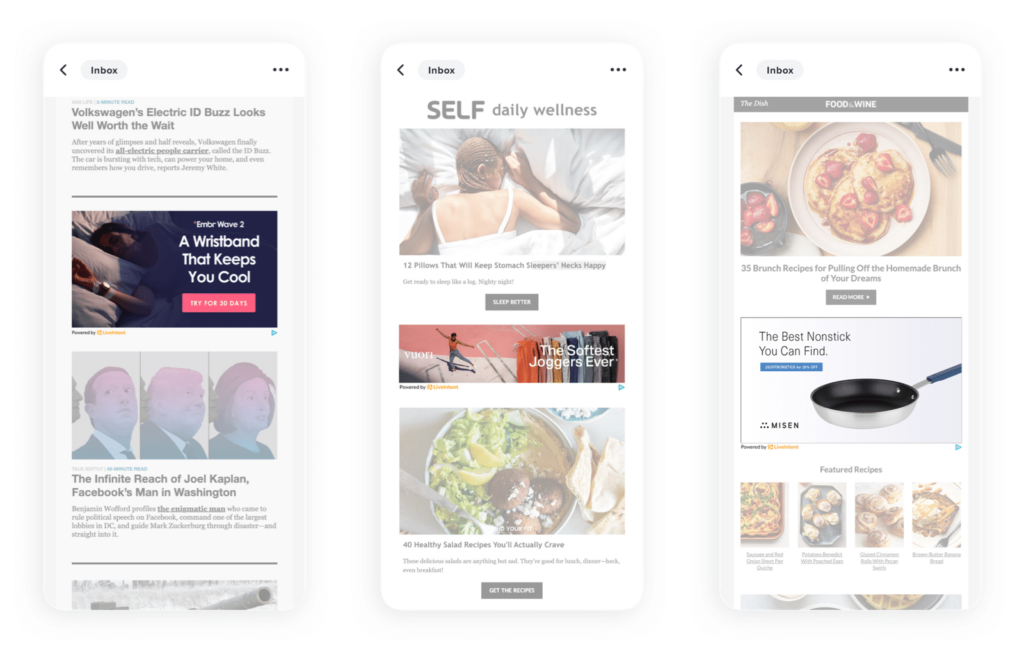
Custom display ads
Display ads are like website banner ads, just within email. They can be static or animated, and a range of ad sizes based on the newsletter template and goals of the advertiser. Additionally, they can sit above the fold, in the middle of the newsletter, at the bottom of an email, or in a sidebar. Common email display ad sizes include 970×250, 970×550, and 300×250.
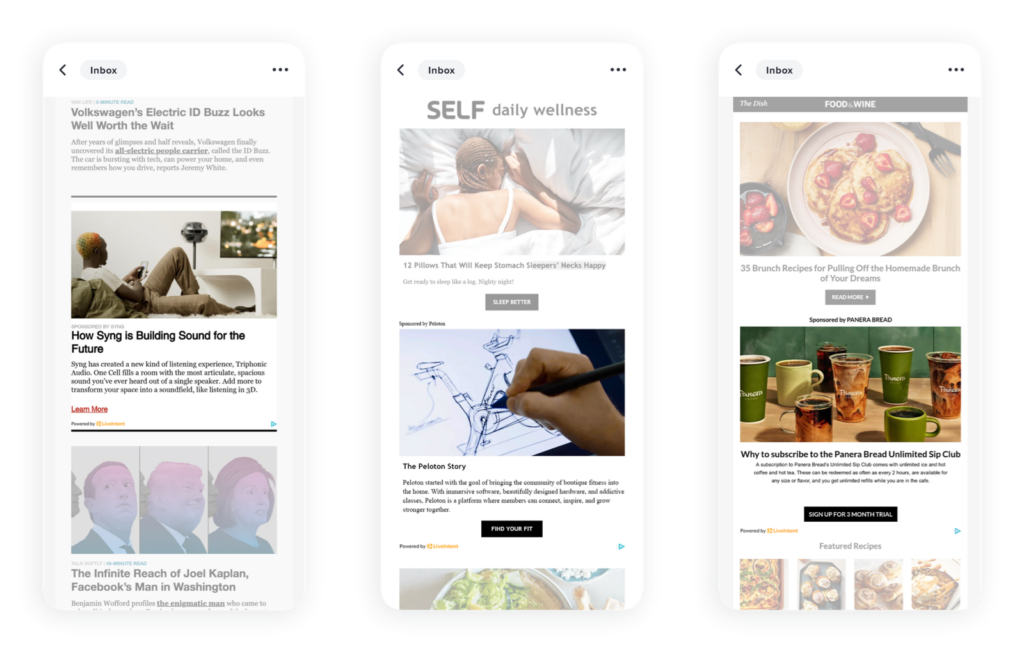
Native ads
Native email ads match the context and format of the content they’re surrounded by, creating a more intuitive and less disruptive user experience. That’s why native ads increase purchase intent by 18% and brand affinity by almost 10%.
Why is monetizing my email list important?
There are many benefits to creating and employing a monetization strategy for your email list, including:
Diversifying your revenue streams
When it comes to one’s business portfolio, it’s important to diversify. Like the old adage says — don’t put all your eggs in one basket. With this in mind, publishers should look to expand into growing trusted channels like email to diversify their revenue streams and drive yield. Dotdash Meredith, for example, saw a 15% increase in newsletter revenue and a 10X increase in CPMs after using native email ads.
Growing your first-party data footprint
With Google phasing out third-party cookies in Chrome, publishers and advertisers need first-party data strategies to survive. Thankfully, email uses first-party data — like the email address — to track customers in privacy-safe ways. And so, businesses can continue to gather audience insights and launch targeted campaigns even without third-party cookies. Want to learn more about how you can unlock business opportunities with first-party data? Check out this blog post.
Delivering personalized audience experiences
Keep audiences engaged and coming back for more by providing them with relevant, customized ads that meet their interests. The New York Times, for instance, created 45 unique, first-party audience segments for personalized ad targeting across its wide base of readers and subscribers.
How to monetize email lists
Businesses can use monetization strategies to better curate audience experiences — beyond delivering organic content. Take digital media company Likemind, for example. The publisher pulls high-quality data signals from email to understand and cater to each reader’s interests.
“We can see if a user has an interest in home & garden content vs. travel content vs. sports based on what they’re clicking on,” says Peter Chang, CRO of Likemind. “We can even see at a basic level, ‘Hey, does a user like slideshows, do they like quizzes, or do they like immersive content?'”
Likemind then uses this data to monetize its email lists with personalized ads that further increase engagement and retention.
Meanwhile, Groupon, an e-commerce company, also monetizes its email lists to increase revenue and deliver hyper-targeted experiences.
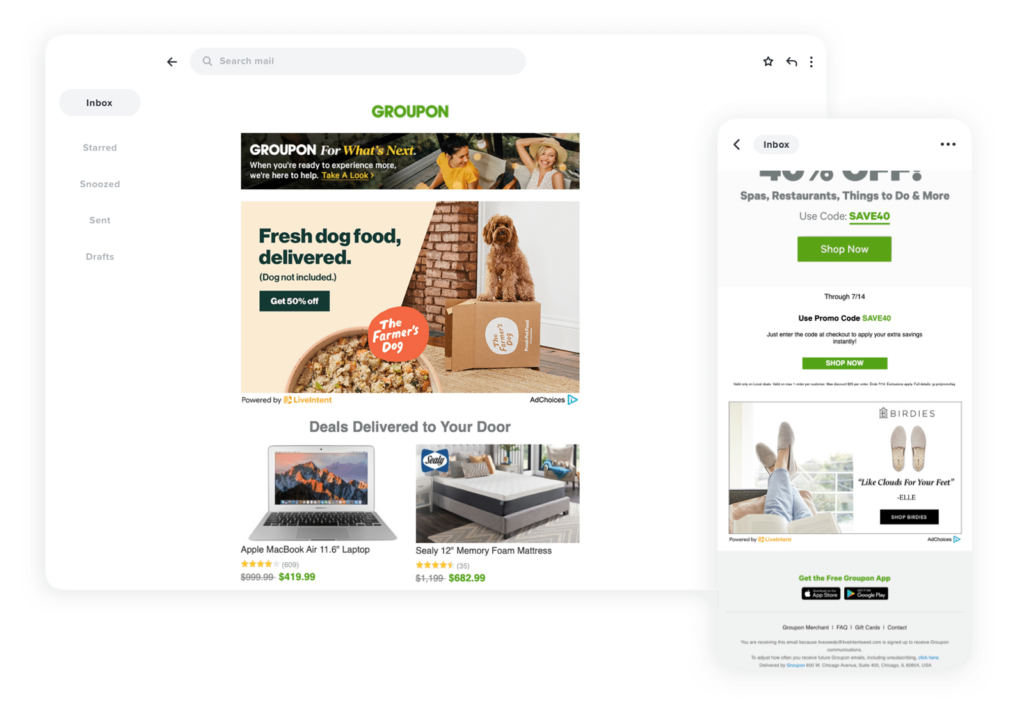
“Email is one of our biggest channels from a scale perspective,” says Jon Nolz, global director of Groupon. “We send out millions and millions of emails on a daily basis, and it’s a way that we engage with our customer base and provide them with relevant offers based on a variety of different factors that we collect through sophisticated tracking.”
How do I monetize my email list?
LiveIntent offers a range of publisher monetization solutions for email lists. With LiveIntent’s Native Ad Blueprints, for example, publishers can build seamless, premium ad experiences while streamlining workflows and unlocking revenue. Publishers can also enable multiple display sizes with flexible placements to start reaping the benefits of this new revenue stream.
So, are you ready to learn more about how you can drive value by monetizing your email list? Read on here.
